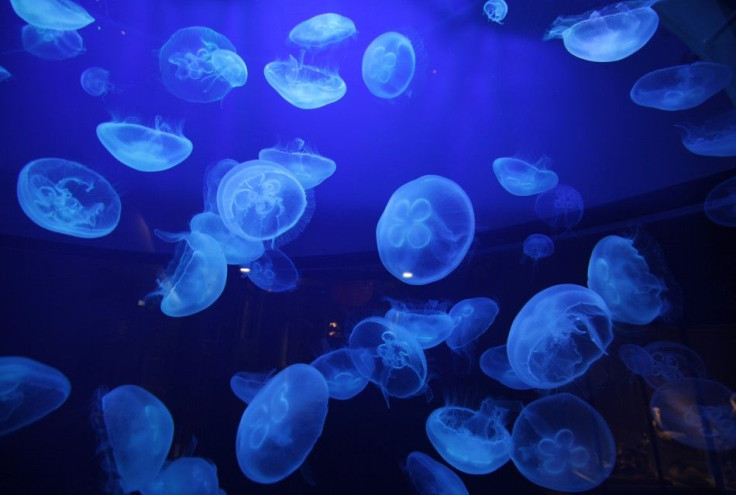Atlantic Sea Nettle Jellyfish Found To Be Two Distinct Species

Jellyfish are one of the most enigmatic and alien looking marine creatures on the planet. They range from the highly venomous Irukandji jellyfish to the giant lion’s mane jellyfish, which is one of the longest recorded creatures with a length of 121 feet.
Not much is known about the behavior of these umbrella-shaped, gelatinous blobs that can be seen pulsating through ocean waters worldwide across a range of depths.
University of Delaware professor Patrick Gaffney and alumnus Keith Bayha, a research associate with the Smithsonian's National Museum of Natural History, have made a startling discovery that could change jellyfish classification forever.
The study they published in journal PeerJ has determined that a common sea nettle jellyfish, which was considered a single species, is actually two distinct species.
The Atlantic sea nettle is one of the most common and well known jellyfish along the U.S. East Coast, especially in the Chesapeake Bay and Rehoboth Bay, where they commonly sting swimmers in large numbers. The species was discovered 175 years ago, and since then has been assumed to be a single species of jellyfish. Using a series of DNA sequencing techniques, the study concluded that they are actually two distinct jellyfish species, the ones found in oceans are different from the ones found bayside.
"Before DNA came along, people in museums looked at organisms and counted spines and bristles, measured things, and sorted organisms by their physical characteristics in order to identify species," Gaffney said in a news release. "In the case of this jellyfish, which has been commonly known for centuries, Keith found through DNA sequencing that there were actually two groups."
The study found that the ocean-based sea nettle jellyfish is larger and has approximately 40 percent more tentacles than its bayside counterpart.
The ocean sea nettle also has a larger bell, the top portion of the aquatic animal, while the tentacles are shorter than those in the bay nettle species, said the release.
The team collected jellyfish off the Delaware coast near Cape Henlopen and also a wide range of samples from Norway and Brazil. They also studied museum specimens from the Smithsonian.
Genetic testing of samples revealed differences in some of the sea nettle jellyfish. Bayha confirmed that there were actually two distinct species: an ocean-based species (Chrysaora quinquecirrha, "sea nettle") and a bay-based species (Chrysaora chesapeakei, "bay nettle") by comparing DNA data from the physical measurements of each species and using statistical modeling to determine the morphology for separating the species.
"When you go back and pay close attention, you start counting the number of stinging cells and types, you see discrete differences that correspond to the DNA," said Gaffney in the release. "In many cases, when we plotted the data, the graphs looked entirely different with no overlap, reaffirming that it was two species."
The team says that the bay nettle is found in less salty waters called estuaries, such as the Chesapeake Bay. There is a daily jellyfish forecast by the National Oceanic and Atmospheric Administration for the Chesapeake Bay, where jellyfish blooms can sometimes become a nuisance.
The team feels that the inability to understand jellyfish blooms here has been because we haven’t considered two separate species.
Interestingly, the new research showed that the bay nettle seems to be closely related to jellyfish found in coastal regions of Ireland, Argentina and Africa.
"It's not that I did anything that different, it's just that no one else looked for a very long time," Bayha said. "Jellyfish are something people don't pay attention to because they're fleeting. They come and go, are difficulty to study, and they don't have hard parts like shells that wash up on shore."
© Copyright IBTimes 2025. All rights reserved.





















